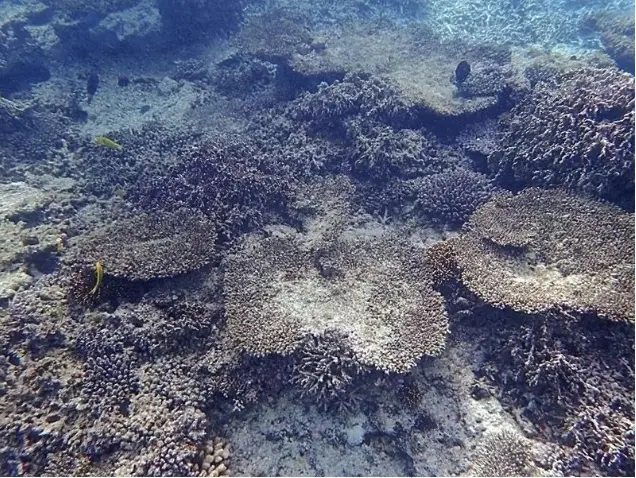About 70 percent of the Sekisei Lagoon coral reef in Okinawa Prefecture, the largest such reef in the nation, has died, according to the Environment Ministry.
Higher ocean temperatures stemming from global warming and other factors are believed to be the cause. The ministry called it “an extremely serious situation in recent years.”
When the ocean temperature reaches about 30 C, it becomes easy for coral bleaching to occur, in which plankton that lives symbiotically with coral leaves the coral. If this continues for a long period, the coral will die from poor nutrition.
According to a ministry survey in November and December last year, covering 35 locations in the lagoon over an area measuring 20 kilometers by 15 kilometers, 70.1 percent of the coral has died. It is covered with algae and has turned dark brown.
Dead dark brown coral is seen in the Sekisei Lagoon in Okinawa Prefecture on Dec. 21, 2016. Photo: Courtesy of the Environment Ministry
The average sea surface temperature from June to August last year in the southern part of the Okinawa region was 30.1 C, the highest since records were first kept in 1982, according to the Okinawa Regional Headquarters of the Japan Meteorological Agency. The annual average figure for the same period is 29 C
(The Japan News)
 简体中文
简体中文



